Lighthouses are the sentinels of globalization; for thousands of years they have stood on barren shores the world over and guided the spreading hands of global trade, keeping unknown seafarers and their precious cargoes safe in the night.
Now they are dying, as modern technology renders them obsolete. Without people to maintain them, they slowly come to pieces: their lights no longer shine, their bodies crumble and decay. They are curios and museum pieces for tourists to explore.
Here are 10 from around the world.
1. Rubjerg-Knude lighthouse, Denmark
Construction of the Rubjerg-Knude lighthouse in Jutland, Denmark straddled the last two centuries, beginning in 1899 and finishing in 1900. It was built on a dune-less cliff 200m away from the sea and 60m above sea level, but as the years passed the sea drew closer, and with it came the dunes, which gradually began to swallow up the base of the lighthouse.

The Rubjerg-Knude, buried in sand. Image from Milan Kuminowski.
Initially it was 23 meters tall, but by 1968 only some 15 meters was accessible- the rest, including all the entrances, were stopped up and buried, finally shutting the lighthouse down.

1899 construction- no dunes in sight. Image from Rubjerg-Knude.

The finished lighthouse, with the dunes slowly climbing up the rise towards it. Image from Solar Energy Dream.
Efforts were made to protect the lighthouse over the years, with sand pine grates installed and lyme grass planted on the dunes in an attempt to halt their encroachment. It didn’t work, and the lighthouse was shut down, but life around it didn’t halt completely- after 1968 the surrounding buildings were converted to a sand drift museum and coffee shop, which continued operation until 2002. Now though the sand has swallowed them too, caving in their roofs with its weight.
Soon, as the sea draws closer and the winds endlessly blows the dunes inland, there will be nothing left of the Rubjerg-Knude at all.

Swamped museum and cafeteria. Image from Ricardo Massino.

Peeking up like Lady Liberty’s hand in Planet of the Apes. Image from Solar Energy Dream.

Dead sentinel of the dunes.
Text sources- Wikipedia, Solar Energy Dream, Rubjerg-Knude.
See more details and photos here.
.
2. The Point of Ayr lighthouse, Talacre, Wales
The ‘Point of Ayr’ lighthouse has stood on Talacre Beach in Wales in various incarnations since 1776, watching over ships make the trek across Liverpool Bay from the Welsh town of Lllandudno.
Abandoned since 1840, it has lived through numerous cycles of disrepair and refurbishment, with the latest reconstruction in 1994, leaving it a cheery red and white candy-pole on the beach, framed by the nearby offshore wind-farm.

Point of Ayr on Talacre Beach, North Wales. Image from Richard John Linnett.

White and red in the distance.

Beginning another cycle of decay; the white paint peels away. Image from Adrian Evans.
Over the year the lighthouse witnessed many changes- during World War 2 it saw Air Force Fighters strafe the beach for target practise, shooting at wooden targets in the dunes and drogues towed by aircraft. At one point it witnessed the whole nearby village of Talacre coated in silver foil, as a guinea-pig for a new anti-radar technology. Now it’s a quiet tourist spot for beautiful views across the bay.
The lighthouse is well-known in the area for its hauntings- allegedly by a ghostly lighthouse keeper walking around the top of the tower. Mediums visiting the location have claimed feeling the spirit of a lonely man, Raymond, who died of a broken heart. Some tourists have come away feeling unwell and disturbed.
To commemorate this lost soul, the lighthouse’s owner commissioned local artist Angela Smith to create The Keeper, a 7-foot tall sculpture made of hundreds of pieces of highly polished, medical-grade stainless steel pieces. The many holes in his body are intended to let the wind pass through and create ghostly chimes.

The Keeper on the beach. Image from BBC Wales.

At his post- the first time the lighthouse has been manned since 1840. Image from BBC Wales.

Silver sentinel of the sands. Image from BBC Wales.
In 2009 the lighthouse opened its doors to the public for one day, and the BBC went along to peek inside-
.
See more details and photos here.
.
3. Tillamook Rock light, Oregon, USA
The Tillamook Rock Light was built in 1881 on a rock off Oregon coast called Tillamook Head. It was born in blood; with its grand opening overshadowed by a nearby shipwreck just days before its guardian gas-light was lit. 16 people died when the barque Lupatia wrecked on the rocks in a storm, proving the necessity of a lighthouse there.

Tillamok Rock. Image from Wikipedia.
Due to the extensive surveying and blasting necessary to build a lighthouse on the Tillamook sea-crag, combined with the erratic weather conditions, it was the most expensive West Coast lighthouse ever built. It soon became known as ‘Terrible Tilly’, for the dangerous commute required for Keepers bringing supplies back from the mainland.

1891 Tillamook Rock.

Long haul to the Tillamook Rock.

Terrible Tilly ravaged by the waves.
Tilly has proved a popular model for both painters and modelers. In fact both pottery and paper models of lighthouses are available in the States as collectibles.

Rough skies and rough waves. Painting by Lynn Wright.
Over the years ferocious storms damaged the lighthouse, shattered its Fresnel lens, and eroded the rock it stood upon, causing it to be decommissioned in 1957 and sold into private hands- ultimately beginning its final lease of life as a columbarium; a final resting place for urns filled with the ashes of the dead.

Crag-top mausoleum, accessible only by helicopter. Photo by Steven Astillero.
The Eternity at Sea Columbarium interred only 30 urns between 1980 and 1999, before the company lost its license. To this day they have not got the license back; but those ashes still remain, sitting on wooden boards overlooking the raging Pacific Ocean.

Your soul’s final resting place? Image by Dick Locke.
Text Sources- Pruned, Wikipedia
See more details and photos here.
.
4. Italian lighthouse in Mogadishu, Somalia
The crumbling Italian lighthouse perched on the edge of Mogadishu’s Old Harbor was built over a century ago, and abandoned some 20 years ago as trade dried up and the failed state of Somalia descended into a home for extreme jihad and piracy.
Now it stands as a reminder of the spectacular city Mogadishu once was, a bullet-pocked shell left to rot as a haven for homeless fishermen and qat-junkies.

A view across Mogadishu’s Old Harbor to the Indian Ocean. Image from
“[The lighthouse’s] spiral staircase is in a state of mid-collapse. Its hollowed-out rooms smell of sea rot and urine. Young men sit cross-legged in the rubble, chewing qat, a plant whose leaves contain a stimulant; and playing a dice game called ladu for hours. Some huddle in a corner and smoke hashish. They seem like ghosts in a city left for dead. But the lighthouse is quiet and it is safe; if anyplace in Mogadishu can be considered safe.”
– Robert Draper, National Geographic

From the reverse angle, where the fishermen enter. Image by Alex Strick.

Sitting at the dock of the bay- image by Frank Keillor

Inside the lighthouse, deteriorating spiral staircase, image by Pascal Maitre, National Geographic.
Text Source- National Geographic
See more details and photos here.
.
5. Great Isaac Cay lighthouse, Bahamas
The lighthouse on Great Isaac Cay, a small island in the Bahamas around 20 miles north-east of the Bimini Islands, was built in 1859 to guide trade-ships carrying exports of sun-dried sea salt from Inagua, rum from Nassau, and aragonite lime-stone to markets in the US.
The lighthouse, though scoured by the sea and surrounded by the tumbledown buildings of the keeper’s house, is actually still in operation as an unmanned light.

A tiny island not even visible on Google maps.
Local lore tells of ghostly noises swelling about the lighthouse during a full moon- apparently the spectres of a mother and infant child shipwrecked on the island in the late 19th century. She is known as the Grey Lady.
2008 image by Anthony Rue.
In 1969 two of the lighthouse keepers disappeared and were never found again; some believe they were victims of the nearby Bermuda Triangle. Others claim a hurricane around that time simply swept them out to sea. Better weather locations via Last Minute Bargain Holidays

Rusted but operational, shooting a flash of white light every 15 seconds across a range of 23 nautical miles. Image from Marinas.
Text Sources – Wikipedia
See more details and photos here.
.
6. Klein Curacao lighthouse in the Caribbean
The Klein Curacao (‘Little Curacao’) lighthouse was first built in 1850, on a tiny spit of land 11km off the southeastern tip of Curacao in the Caribbean Sea. It’s exactly the kind of place that Jack Sparrow would have pranced around.
Now it is hollowed out, crumbling rapidly, and nominated for endangered status, despite being rebuilt once in 1879 and again in 1913.

White masonry tower, red brick keeper’s dwellings. Image from Philip Stevenson

Located on a barren flat of rock and low scrub.? Image from Luciano Gollini
The 20m (66ft) tall lighthouse tower is abandoned, along with the two ruined 2-story keeper’s houses flanking it, but still functional. It was reactivated with a solar-powered LED beacon during the restoration of Curacao’s aids to navigation in 2008, having stood utterly dormant for many years prior. A stretch of coast dotted with rusting shipwrecks attests to its necessity. Now the LED emits two white flashes every 15 seconds.

A rusting wreck sits on the shallow rocks at left.
Wreck of the tanker Maria Bianca Guidesman. Image from here.
Klein Curacao is only 1.7km squared, with no permanent population but a few small huts used by fishermen. The windward side of the island is littered with wrecked boats, hundreds of washed-up flip-flops, and thousands of plastic bottles.
Its bigger brother Curacao sits off the coast of Venezuela, with a permanent population of about 140,000, some of whom day-trip to Klein Curacao to dive around its beautiful coral and underwater caves. Curacao officially became a Dutch colony in 1815, despite German expansion efforts in 1888, when a German naval base was established on Klein Curacao. However they were soon beaten off by the stormy weather. No ruins of the base remain.

20m tall tower looms against Caribbean skies. Image by M. J. Hagen

Rocks and endless scouring wind. Image from Prajeesh Prathap
Text Sources- Wikipedia, Lighthouses of the Netherlands Antilles
See more details and photos here.
.
7. Capo d’Otranto lighthouse, Italy
The Capo d’Otranto lighthouse was built in 1867, situated at Italy’s most eastern point, marking the point where the Ionian and Adriatic Seas meet.
It was abandoned in the 1970’s, but restored and reopened to tourists in 2008, where it hosts the Centre on Environment and Health of the Mediterranean ecosystems and a multimedia museum of the sea.

Prior to restoration, in crumbling and colorless condition.
The 32 m (105 ft) tall round stone lighthouse rises from a 2-story keeper’s house, the tip of which requires advance booking on New Year’s eve, when many Italians flood to the cape to watch the new year’s sun rise over the ocean.

Capo d’Otranto by pink dusk light.

After the 2009 refurbishment, looking spic and span.

The setting sun lights up the tower daily. Image from Lucera Dente.
Text Sources- Lighthouses of Italy, Wikipedia
See more details and photos here.
.
8. Aniva ‘nuclear’ lighthouse, Sakhalin, Russia
The Aniva lighthouse was built by the Japanese in 1939, on a chunk of rock off the southern coast of Sakhalin, a thin 950 km long island situated just east of Russia, between the sea of Japan and Russia’s Sea of Okhotsk. The island was largely uninhabited until the 1800’s, when both Japan and Russia became interested in annexing it; the Russians for use as a penal colony.
Almost a fairy-tale castle on the water.
That led to years of conflict, retrenchment, and buildup of military forces, with both nations agreeing to split the island across the 50th parallel. A ring of light-houses were built on Sakhalin’s rocky coast to signal incoming troop carriers and merchant ships.
After around 50 years of sharing the island, the Russians annexed it all in the Second World War, causing some half a million Japanese to be evacuated back to Hokkaido. In 1951 the Treaty of San Francisco was signed, officially handing tenure of the island over to the Russians, though plenty of territorial issues remain over surrounding, smaller islands.
A dangerous and rocky approach. Building the lighthouse required extensive blasting of the rock it sits upon to make a level surface.
Now the Aniva lighthouse is abandoned. Its seven stories of diesel engines, accumulator rooms, keeper’s living spaces, radio facilities, storerooms, large clockwork pendulum (for regulating optical system), and 300kg pool of mercury (as a low friction rotation surface for the lens) are still, and echo only with the crash of waves against the surrounding crags.
Now rusted and swarmed by gulls.
Candy-pole heyday.
Isolated and perilous.
I read about this location first on English-Russia. There are interior photos taken by an urban explorer claiming that the lighthouse was radioactive, having been powered by a small nuclear unit that had breached. Though looking at the size of the structure and the total lack of evidence elsewhere on the net (that surely a breached nuclear site would attract), I rather doubt its true. It is dramatic though.

Apparently this reads Radioactive. Surely someone’s idea of a joke.
Text Sources- English-Russia, Sakhalin Lighthouses
See more details and photos here.
.
9. Ship John Shoal light, Delaware, USA
Construction of the Ship John Shoal Lighthouse in Delaware Bay took 27 years, from a decision by the US Congress in 1850 that a light was needed, through various incarnations of caisson-foundations, screw-pile roots, 2000 tons of rip-rap, and a temporary anchored lightship, to placement of the completed iron tower in 1877.
The lighthouse went unmanned in 1973, and as recently as last month (June 2011) it was declared no longer necessary by the Coast Guard and made available for public sale.

Ship John Shoal sitting on a heap of concrete and rip-rap. Image by Nick Zelinski.
The Shoal upon which the lighthouse sits came to be named ‘Ship John’ in 1797, when the ship John ran aground there while on the last leg of a transatlantic voyage from Germany. It was Christmas Eve, and doubtless the 60 German crew were looking forward to festivities in Philadelphia. Instead they were off-loaded and transported up river to smaller settlements up Cohansey River, where they spent the holiday with strangers.
There was time enough to unload the cargo of linen, glass, rope, copper nails, gin, and German toys, before the ship John was frozen into the thick winter ice and its fate was sealed.
Ship John Shoal flocked by gulls, with a boat for scale. Image by Ann Searle.
In 1850 a screw-pile light-house was approved for the shoal, a design where long metal piles are literally screwed into soft undersea mud. However when ice floes carried away a lighthouse using the new technology, a new approach was considered: a caisson, basically just a hollow metal tube sunk into the ocean then filled with concrete, to form a solid base.
By 1874 there was a temporary light atop the caisson with two keepers in attendance, but they abandoned their post that winter due to huge chunks of ice battering the caisson, prompting the fear that it would be rolled away. 2000 tons of rip-rap, which is rubble used to ‘armor’ coasts and sea-borne structures, was dropped around the caisson to protect it from ice. Soon after, in 1877, the 125-foot tall permanent iron superstructure was fastened atop the caisson, and the Ship John Shoal Light began its life proper.
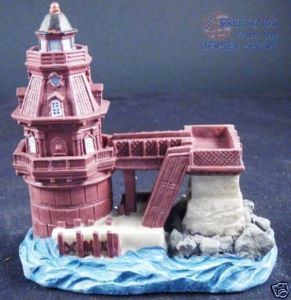
A simple model of the Ship John Shoal Light. Image from ebay.

A more detailed version, minus the side-long storage tank. Image from Harborlights.
Various stories of life for the keepers on the Ship John Light have been passed down.
– One tells of a curse in the 1880’s, a sickness that left several keepers sick or paralyzed after extended stays. This continued for several years, until it was discovered that the structure’s red leaded paint was washing into the rainwater tanks. The old paint was removed and replaced with a coating of hot tar. Health at once improved, and the curse was lifted.

Ship John Shoal and storage tank.
Text Sources- Wikipedia, Lighthouse Friends
See more details and photos here.
.
10. Fish Fluke Point, Canada
The Grand Harbor Lighthouse on Fish Fluke Point, Ross Island Canada, was built in 1879, a square wooden tower 32-feet tall with the Keeper’s dwelling attached. Its fixed-white catoptric light was visible for 11 miles in clear weather. It was closed in 1963 when a replacement lighthouse went up on the nearby Ingalls Head breakwater, then smashed hard by the Groundhog Day Gale in 1976.
It has not been repaired since, prompting calls by locals and lighthouse aficionados for ownership to be transferred to a more dutiful custodian.

Looking out over the Bay, white wooden boards battered grey. Image from Robert Williams.
How it looked before the 1969 Gale. Image from the Canadian Coast Guard.
The history of the Grand Harbor Light tells us something of the Machiavellian political chicanery involved in becoming and remaining a Lighthouse Keeper. The light’s second Keeper, Mark Dagget, had served for 14 years when charges of political partisanship, failure to give proper attention to the station, and being absent from the station and unable to assist in a drowning situation were brought against him.
He refuted all charges as an attempt to take his government-appointed job away, ran up a petition of local citizens in his support, claimed he never discussed his political incinations with others, and finally beat the charge. Unfortunately he died he few years later in 1900, and despite pleas from his wife that their 18-year old son take up the Keepership, politics trumped charity, and the appointment was handed away.

Hollow now and surely on the brink of collapse. Image from Geccko.

With the foundation-stones blasted away, it can’t have long left. Visit via Cheap Holidays Abroad . Image from Swallowtail Keepers.
A few years later in 1912, the fourth Keeper, Lloyd Charles Dakin, was accused of attending a political meeting and ‘annoying’ one of the Members of Parliament. He too refuted the charges, claiming he wasn’t even at the meeting, but he lost the case and was dismissed, with just 3 days to clear out his family and possessions.
All this raises the question- why was it illegal for a lighthouse keeper to be politically partisan? Presumably to avoid the sensation that the job was handed out with any political nepotism in mind.

The light is owned by one Errol Rainess, who bought it sight-unseen in 1984 for no-one knows what reason. He spends most of his time in Belgium, and has another property in New York City that has also been neglected for the past 20 years. Image from George.
Text Sources- Lighthouse Friends
See more details and photos here.
.
Explore more Japanese ruins (haikyo) in the galleries:
[album id=4 template=compact]See many more abandoned places in the ruins gallery.
You can also read SF & Fantasy stories inspired by ruins.




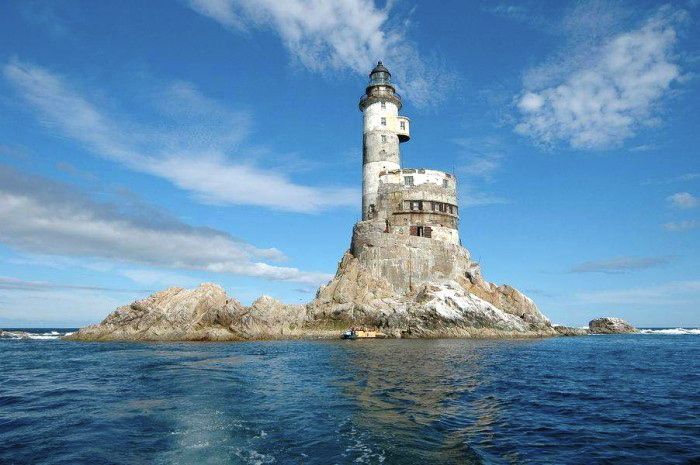
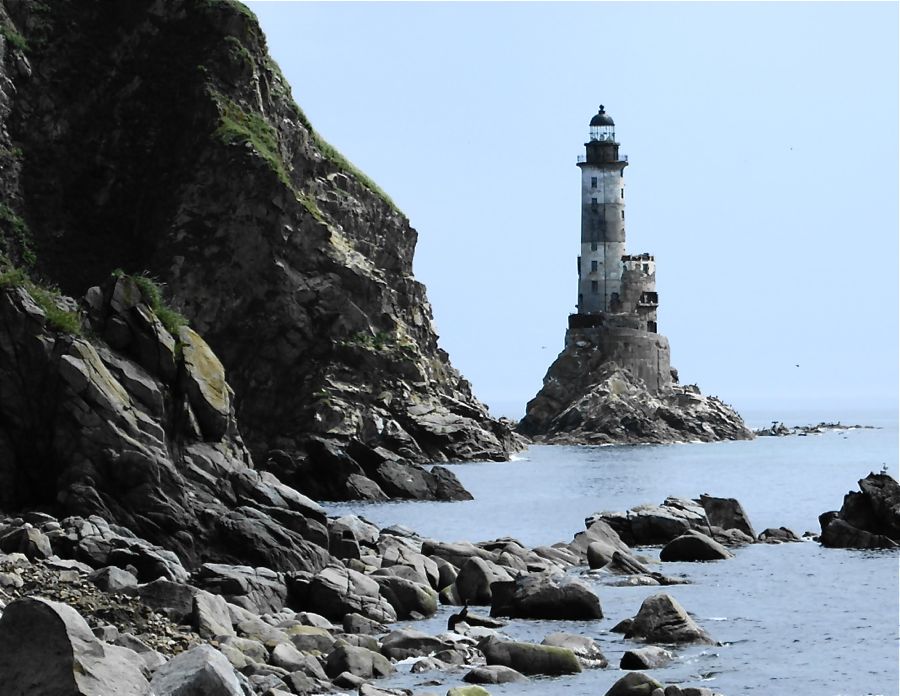
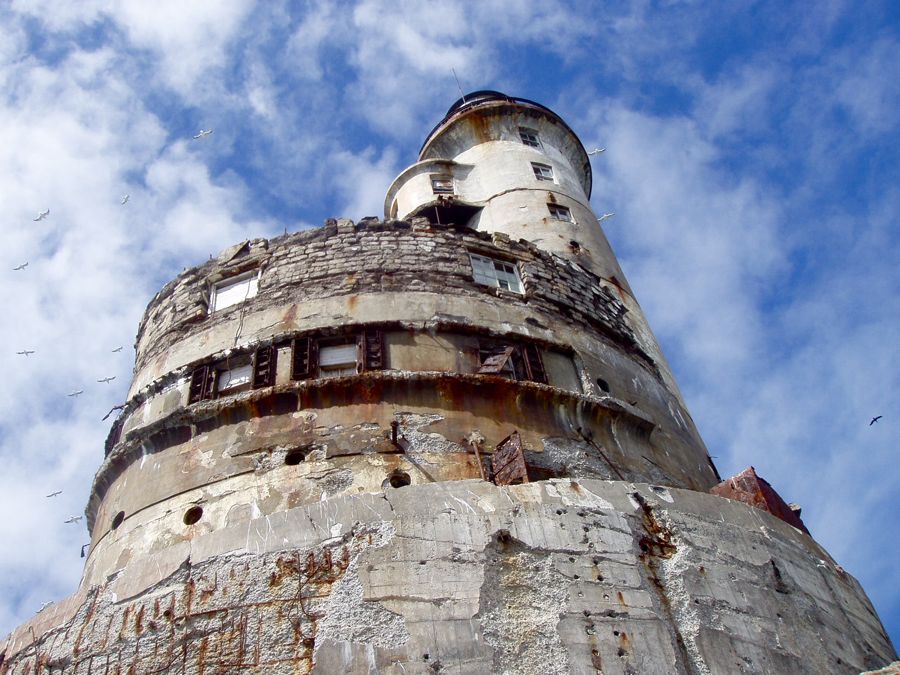
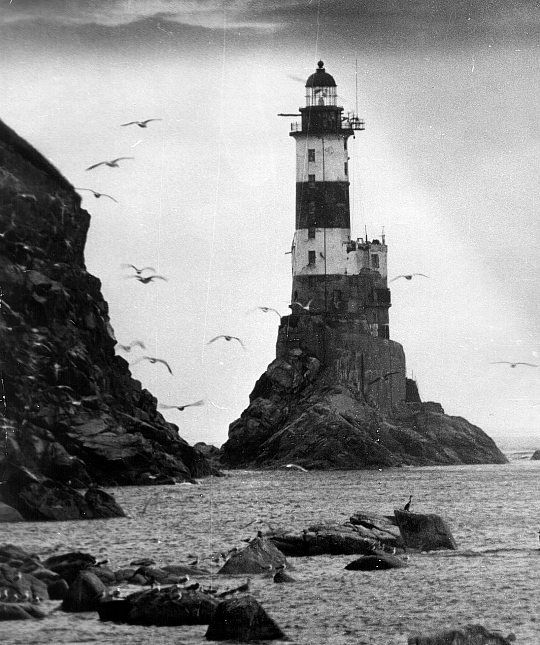
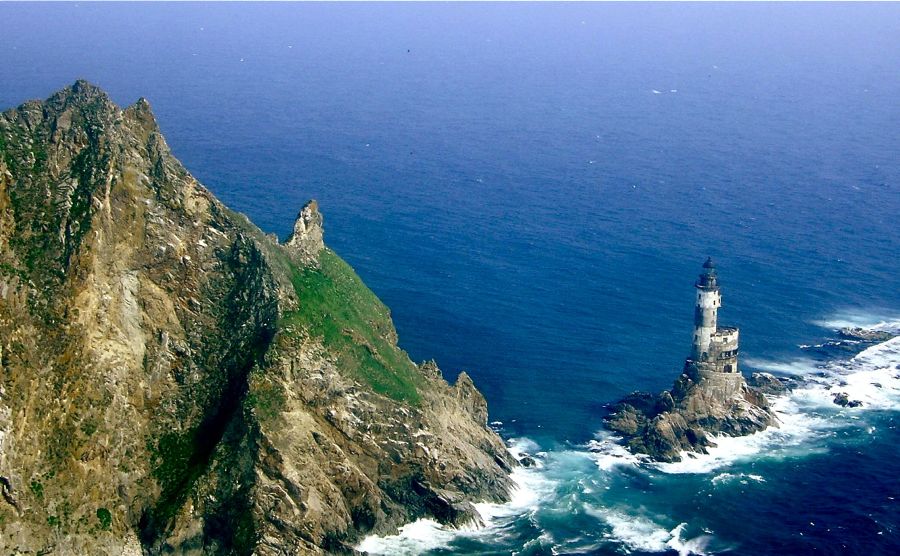
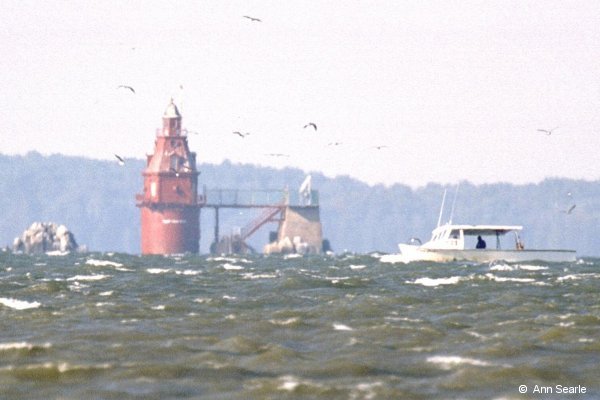

Comments 9
I love old crumbling buildings, with character and history that make you wonder about their stories and the stories of the people who have lived there. Lighthouses have become a recent favorite of mine, ever since I got the chance to check out some of the ones along the North Carolina coast here in the US. Thank you for taking the time to compile this list of amazing and wonderful abandoned lighthouses, and for some of the history of each one. Your web site is amazing and I am thrilled to have found it!
You have compiled very wonderful list of light houses. Light Houses are most beautiful and some kind of mysterious places so I like them so much. Thanks a lot for sharing these pics and history of these light houses. I will definitely pay a visit back to your website.
—
Claire Wilson
a very interesting list with a long history attached
thanks a lot.
Thanks for the pictures. I’ve always been drawn to lighthouses surrounded by dark blue waters. Great sense of mystery and isolation.
Your down-to-earth histories and multiple pictures are what make your site impressive and enjoyable!!!!! Thank you for a rare treat…..
Interesting article! The final lighthouse shown, on Ross Island, is now gone. Brought down by heavy winds.
Very interesting. Thank you!
FYI–‘????????’ means radiation.
AI would add one more interesting example from Estonia:
http://www.etts.ee/EN/lighthouses/lighthouses-list/saaremaa/kiipsaare
http://www.saaremaanaturetourism.eu/Kiipsaare-Lighthouse1